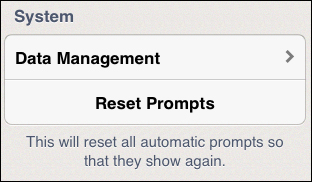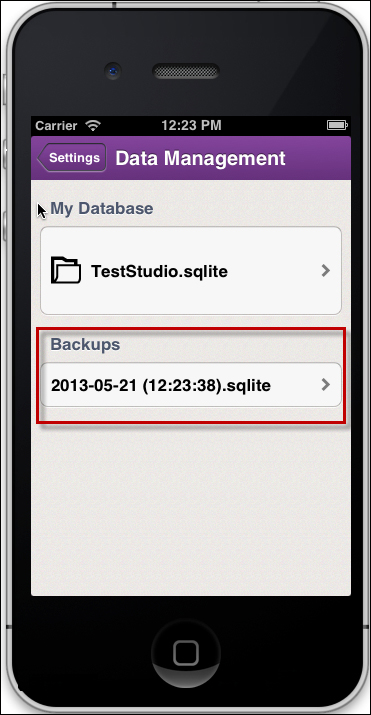In Test Studio, portability is not a feature that confines only to testing your application seamlessly on the various supported devices, but it also permits transferring local database used by Test Studio over multiple machines. By opening iTunes and locating the database residing under the Test Studio's Document folder of the Test Studio App, this database can be moved to your local machine and vice versa. The following sections demonstrate how you can administer your database by creating backups and then merging them into an existing active database.
Only test projects belonging to profile can be transferred among devices, therefore, we must switch to the local profile before proceeding with the following steps:
- On the Test Studio main menu, choose Settings.
- On the Settings screen, click on the Web Portal disclosure button.
- From the Teams option, select Local.
Go back to the Settings screen and scroll down to the System section shown in the following screenshot:

Managing databases
Click on the Data Management disclosure button, and then from the Data Management screen choose TestStudio.sqlite. The Database window is invoked where the first section displays the database summary.
The Local Actions scope allows backing up the database to your local machine, so click on the Backup My Database button. A pop-up window warns the user that only non-synced projects presented in the Local profile section will be backed up. Click on the Backup My Database button. The backup is processed and the result is displayed on the Data Management screen under the Backups section as follows:

List of backed up databases
The Global Actions scope has the Reset My Database button, which will reset the entire database including all profiles. If you do not have a backup of your database, the data will be lost. Hence do not click on it for now!
On one hand, backups can be restored by firstly selecting the targeted timestamp and then performing the provided actions. Select the backup outlined in the preceding screenshot. The Database view is invoked also with actions acting at two levels.
The Local Actions scope affects only the local non-synced databases. The Merge Into My Database button will attempt to add the backed up projects to TestSutio.sqlite. If the backed up project doesn't exist in the local database, it will be directly added. If a version already exists, the newer version will be preserved. The Delete Database button will only delete the selected backup.
The Global Actions scope affects the entire database, meaning all profiles and projects. Therefore, the Overwrite My Database button will totally replace the existing database with the backed up version.
